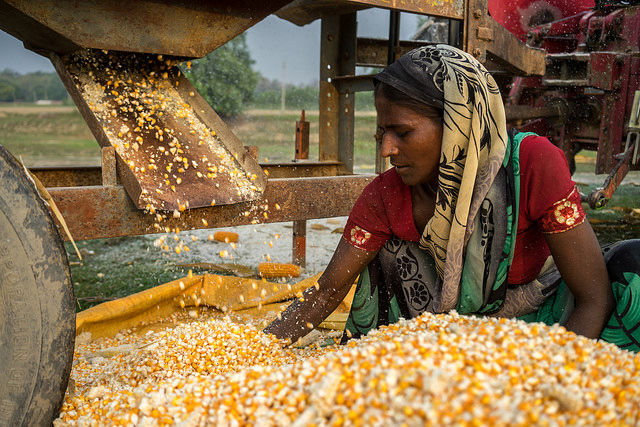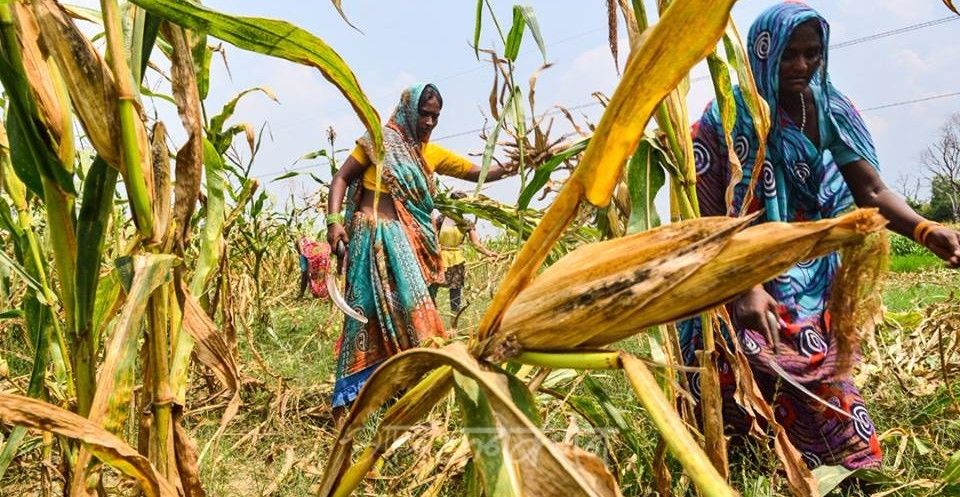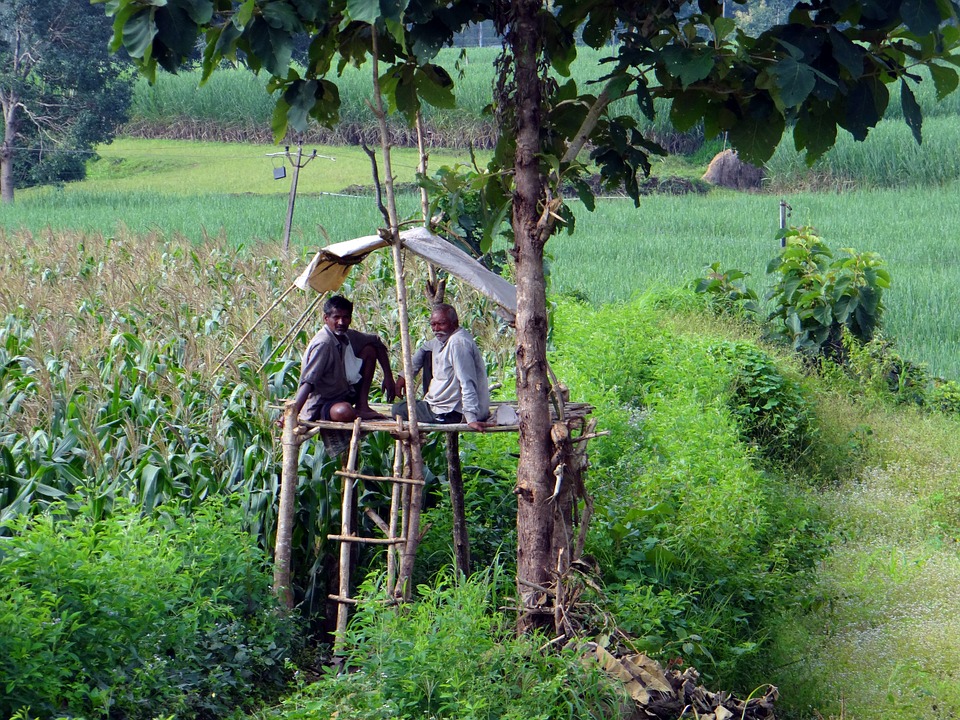Maize farmers struggle to secure a fair price; the Centre decides to import maize at a lower rate
A notification allowing poultry and starch mills to import 50 lakh quintals maize at an import duty of 15 per cent has been issued. However, the regular import duty on maize is 60 per cent.


When our farmers are already suffering due to the lockdown, the decision of import is going to cause losses to millions of farmers in India. Photo: maize.org
At a time when the maize farmers in India are agitating for the right price, the central government has decided to import maize at lower rates. This decision has caused a further drop in maize prices in the mandis (wholesale markets), which are to fall further in the coming days.
The Department of Revenue, under the Union ministry of finance has issued a notification allowing poultry and starch mills to import 50 lakh quintals of maize at an import duty of 15 per cent under the tariff rate quota (TRQ). However, the regular import duty on maize in the country is 60 per cent. This controversial import has been allowed at a time when the minimum support price (MSP) of maize in local mandis has gone down from Rs 1,850 per quintal to Rs 1,000 per quintal. The imports are expected to further suppress the maize rates in the country.
Tariff rate quota allows a country to import a given product within a specified quantity at low import duty. At present, four food items — maize, milk powder, mustard oil, and sunflower oil are imported under this quota scheme.
Amid the COVID-19 lockdown, maize farmers are already struggling to find buyers for their produce. Take the case of Ashok Singh, a farmer of Khagaria village in Navagachiya block of Bhagalpur district in Bihar. He had grown maize on 35 acres land. Despite a good yield of about 35 to 40 quintals per acre, he is unable to get a good price for his harvest.

“The maize price has come down from last year’s Rs 2,000-2,200 per quintal to only Rs 1,050 per quintal now. So far, I had held on to my produce, but now I am forced to sell it at a lower rate as I cannot wait any longer for the right price,” he told Gaon Connection.
According to the Union ministry of agriculture, the highest maize cultivation in the country is in Bihar where 20 per cent land is used to produce two maize crops a year. Also, 80 per cent of the total maize production in the rabi (winter crop) season takes place in Bihar. Ten districts of Bihar — Samastipur, Khagaria, Katihar, Araria, Kishanganj, Purniya, Supaul, Saharsa, Madhepura and Bhagalpur — produce 30 to 40 per cent of the total maize output in the country.
In the neighbouring state Uttar Pradesh, maize is cultivated on 11 per cent agricultural land, and in Rajasthan, 10 per cent land. Madhya Pradesh and Andhra Pradesh both cultivate maize on eight per cent land each.
Last month, on June 2, the central government announced minimum support price for 17 crops including maize. The MSP of maize for the year 2020-21 has been set up at Rs 1,850 per quintal. As per the report of the Commission for Agricultural Costs and Prices, which determines the price and cost of crops, and based upon which the government seeks a profit of 50 per cent for the farmer, growing one quintal maize costs Rs 1,213 to the farmer. The mandis and market rate — Rs 1,000 per quintal — is far below the production cost of Rs 1,213 a quintal. Thus, let alone profit, maize farmers are unable to even recover their input costs.
No wonder farmers are suffering due to poor pricing of maize. There have been agitations across the country for maize MSP.

Maize farmer Satish Rai from Seoni district of Madhya Pradesh told Gaon Connection about the background of kisan satyagraha, “The government has announced Rs 1,850 per quintal as maize MSP, but maize in the mandis of Madhya Pradesh is selling at Rs 900-1,000 a quintal. At this price, the farmers are incurring a loss of Rs 900-1,000 per quintal. That is why, in distress, we had to hold agitations.”
The plight of maize farmers in Uttar Pradesh is no different. Ramkumar Verma, a 67-year-old farmer from Ratapurwa in Kannauj district near Lucknow-Agra Expressway, said: “Maize is being bought at Rs 1,170 per quintal in Tirwa mandi. Last year, the rate was Rs 2,000 per quintal. The wholesalers are saying the rates will remain low, as there are fewer outside traders due to the lockdown.”
“These days the rates are at their lowest,” Ranjit Rajput of Nathapurwa complained to Gaon Connection, “A few days ago, I sold my maize crop from five bighas [five bighas make one acre] at Rs 1,130 per quintal. Last year I had sold maize at Rs 1,170-Rs 2,200 per quintal last year.”
Last year, the market rate of maize was more than its MSP, but the imports have caused a steady decline in maize prices. Last year, the price of maize in mandis was Rs 2,000-2,500 per quintal, and 3.12 lakh tonnes of maize was imported in the country.
“The import decision has pushed down the maize price in the local markets significantly. Traders have reduced the maize price thereby causing losses to the farmers,” Bhagwan Meena, agricultural affairs expert and farmer leader told Gaon Connection. “The decision of the government is ill-timed as farmers have already suffered a lot due to the lockdown. The recent move of imports is bound to aggravate the plight of farmers.”

Citing the example of cotton price in 2007, Meena said, “The price of cotton had gone up from Rs 6,000 per quintal to Rs 7,000 per quintal in 2007. The farmers were in profit. Just then, the government decided to stop exports and the cotton price crashed down to Rs 4,000 a quintal within two days.”
Kedar Sirohi, the acting president of the Kisan Congress, Madhya Pradesh said the government’s policies on import-export were ambiguous. “When adequate maize is being produced in the country, the starch or other companies should be provided maize from within the country. When our farmers are already suffering due to the lockdown, this decision of import is going to cause losses to millions of farmers in the country,” he lashed out.
According to him, the government should consider maize as an essential food item. The Prime Minister Narendra Modi has stressed a number of times on consumption of coarse grains and maize is a coarse grain. Unless the government ensures its consumption in the country, the farmers will not be able to get a fair price, he added.
However, Kamal Sharma, founder of the commodity trade website moltol.in, believes although the government has allowed imports, foreign maize may not come in to the country. “Because of the bilateral relations, the government has to take such decisions. But the fact remains that despite reducing import duties, maize traders will not buy from other countries,” he said. “There has been a talk of maize procurement from Ukraine. Their maize is Rs 2,000- 2,200 per quintal in our currency. Why would then our traders buy their maize?” he asked.
Since majority of the maize in the country is used for manufacturing poultry feed and the poultry sector is badly hit by the lockdown, it is unlikely the traders will import maize from other countries. “There is no need to panic,” claimed Sharma.

